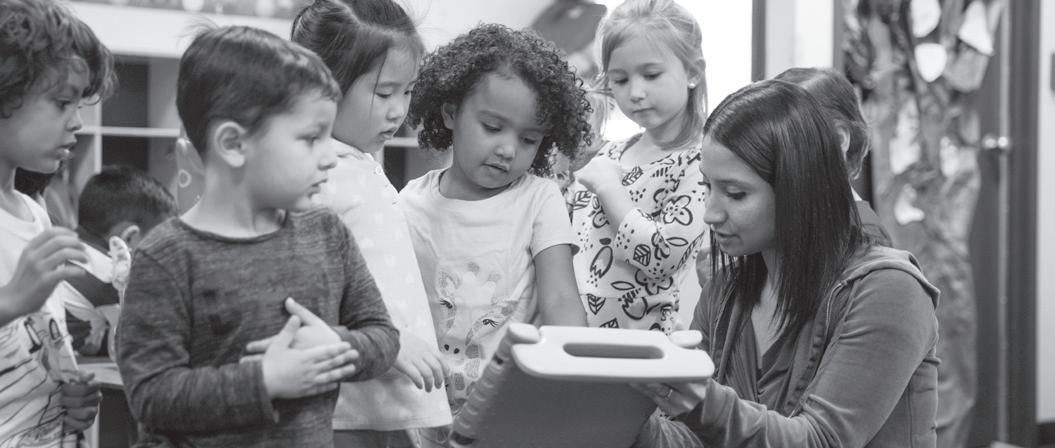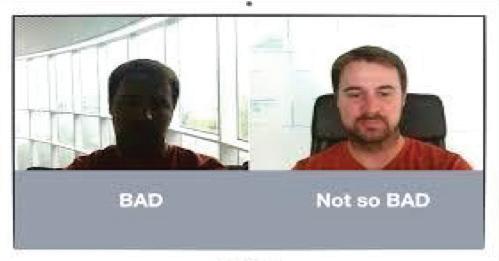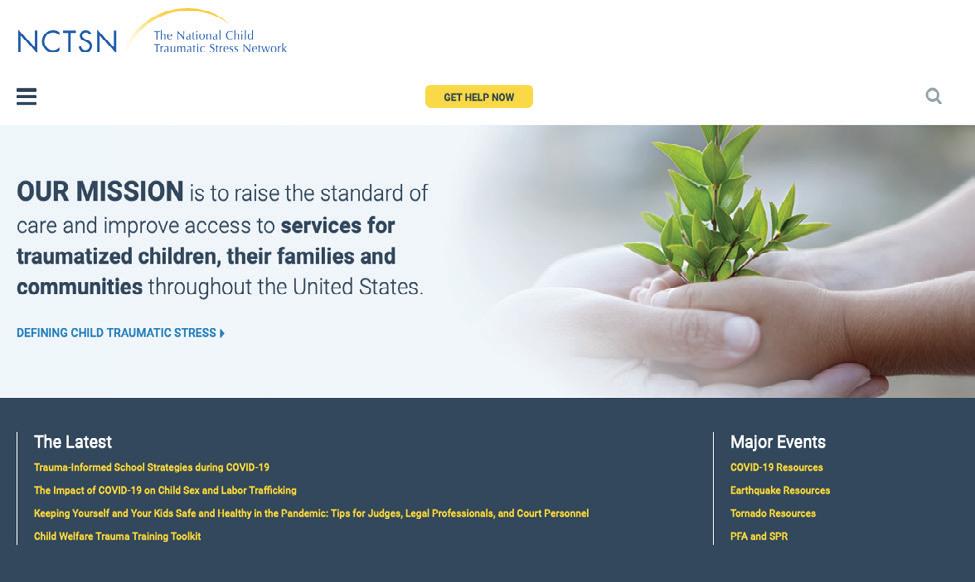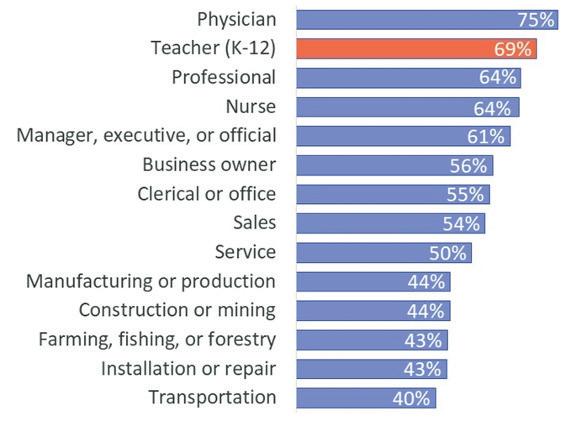Navigating Your First Year of Teaching
Pandemic-related Notes to Beginning Career & Technical Education (CTE) Teachers on Adaptation Skills for Instructional Effectiveness Dr. Benjamin Ogwo ACUE Professor & Chair, Career & Technical Educator Preparation, State University of New York at Oswego, New York The COVID-19 pandemic has posed serious leadership and instructional challenges to the implementation of career and technical education (CTE) programs. This pandemic era is characterized by heightened health and safety concerns for CTE programs which have always stressed students’ safety. These concerns have been regularly addressed by the Center for Disease Control (CDC) and Occupational Safety and Health Administration (OSHA) guidelines on how to protect the students and the teachers. The guidelines have impacted every aspect of CTE program implementation including instructional delivery and teacher effectiveness. Beginning CTE teachers are particularly impacted by the numerous and dynamic changes that were not foreseen during their teacher preparation hence they are struggling to grapple with achieving CTE program objectives during the pandemic. Career and Technical Education (CTE) programs prepare students for college and the acquisition of occupational skills (Gordon & Schultz, 2020) which regulates their curriculum implementation as well as instructional delivery. The CTE teacher is therefore saddled with the responsibility of preparing students for the ever-changing workplace conditions which are further complicated by the pandemic. These pandemic-related conditions have taken a heavy toll on the beginning teachers’ ability to meet the instructional demands associated with social-emotional, occupational skills acquisition, and adherence to occupational standards in their respective CTE programs. Wilcoxen, Bell, and Steiner (2020) pointed out that it takes beginning teachers even more time to meet their professional obligations than veterans as they adjust to new roles, content, and varying school cultures; this is especially so within the pandemic era. Some of these beginning teachers were recruited with industry experience and without pedagogical training while others were prepared as preservice students solely on the use of traditional instruction delivery while the pandemic era forced CTE programs to resort to the use of varied digital instructional delivery for coping with remote learning. These teachers are foremost first faced with adapting to challenges of a new teaching career, the apprehension in utilizing an uncertain pandemic-related instructional situation, and sometimes are using hit-and-miss methods to apply digital technology for instructional delivery. In addition, synchronous virtual delivery using Zoom, Teams, and Google Meet are commonplace in the CTE program, and beginning teachers need guidance on how best to adopt these media for instructional delivery. This paper is therefore aimed at exploring the beginning teacher’s challenges and hints on how to adapt to the instructional demands for a pandemic era. Challenges and Adaptation Skills for CTE teachers during the Pandemic
86
The greatest challenge for beginning teachers is the struggle with self-confidence as well as self-assessment in their ability to cope with varying instructional demands caused by the pandemic. Against the background of changing CDC and OSHA guidelines, public health, transportation issues, and other uncertainties, the teachers are challenged to remain resilient and professional in American Association for Employment in Education
the discharge of their duties. Similarly, the emotional and social challenges in coping with remote learning situations as well as the associated health issues of the COVID infections are incapacitating for both the beginning and veteran CTE teachers. Other challenges include lost time, missed in-person laboratory activities, the use of unfamiliar learning management systems, differentiated instructions for all students according to specific learning difficulties, and the application of blended learning instructional delivery. The most pertinent adaptation skills needed by the beginning CTE teachers are those that build confidence in their ability to strive despite the challenges of the pandemic. The teachers should demonstrate adaptive skills in the use of empathy, flexibility, and creativity in the application of class rules and implementing the content of the course syllabus. It is important to record every instruction, so students who could not attend the class could subsequently watch the video. The blended instruction and use of synchronous virtual instructional delivery techniques are highly recommended. The use of Zoom, Google Meet, Teams, etc. should be preceded by pre-class rehearsals and training of the students on how to participate in virtual classes. Be sure to ascertain the availability of internet services and workable computers for all students before contemplating the use of synchronous virtual instructional delivery. Instructional Effectiveness Delivery during a Pandemic Instructional delivery during the pandemic is affected by lots of moving parts such as political considerations, parental concerns, changes in epidemiological rules (CDC and OSHA guidance), and difficulties in completing laboratory activities entailing in-person participation. The stress should no longer be implementing all the pre-pandemic syllabus but effectively delivering on plausible course content without compromising the teacher’s and students’ safety and health. Rather than broad coverage of the syllabus, the modular approach should be adopted in redesigning the syllabus to focus on composite skills/information that transcends all aspects of the curriculum. The associated uncertainty of school timetables and guidelines demands more creativity and differentiated instructional and assessment in CTE program implementation. Instructional effectiveness during the pandemic is redefined as doing the most with the least resources, less time, more use of digital technology in various instructional situations, and a show of empathy in instruction and evaluation activities. Conclusion There is no magic wand to solve all the challenges associated with the pandemic. Every teacher should work with school leadership and the school district to evolve individualized solutions to identified instructional challenges. There should be more use of social-emotional skills in enabling the students to cope with the usual demands relating to the pandemic. Ultimately, beginning CTE teachers should be confident that the pandemic is a passing phase in their career and should soon come to an end.































